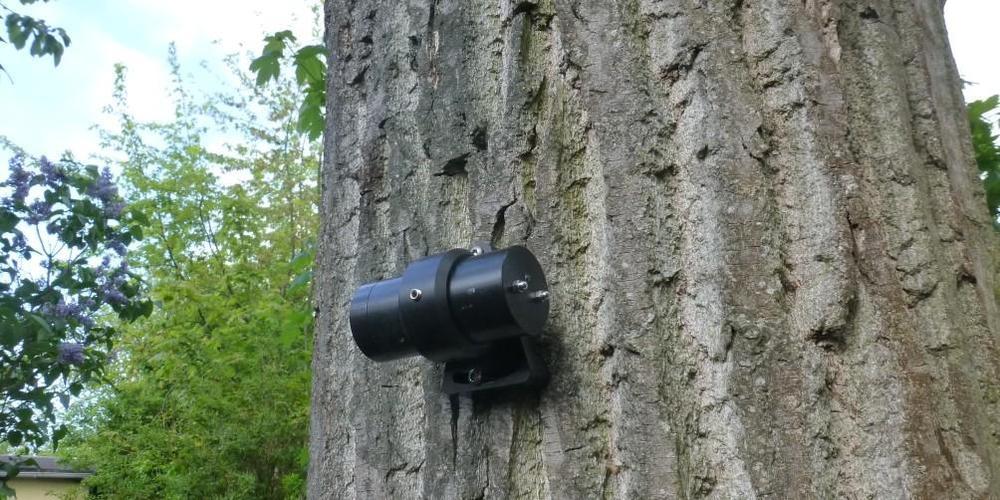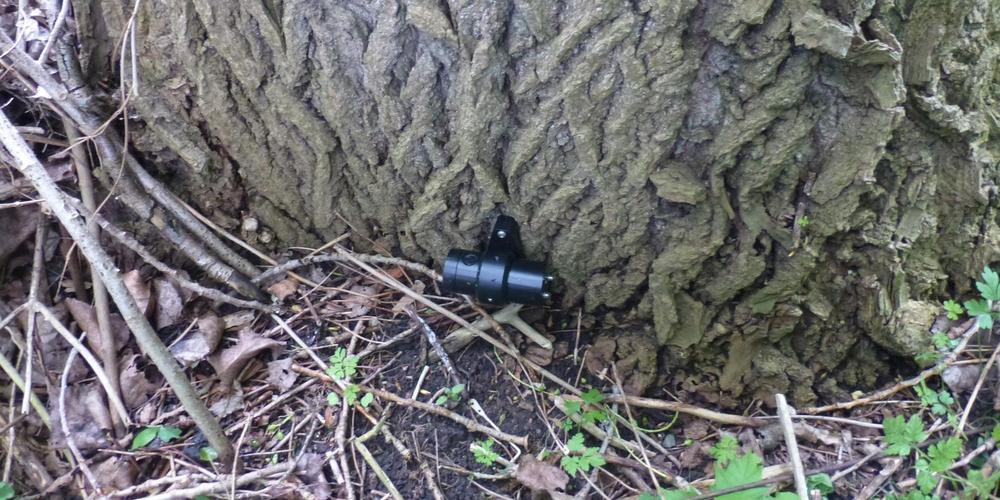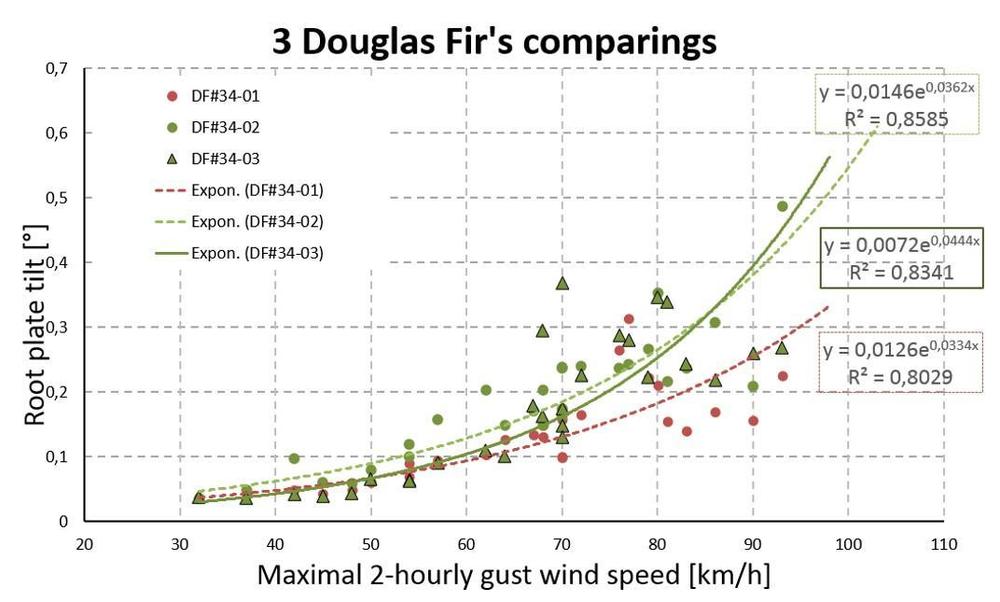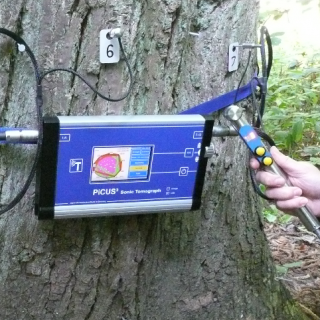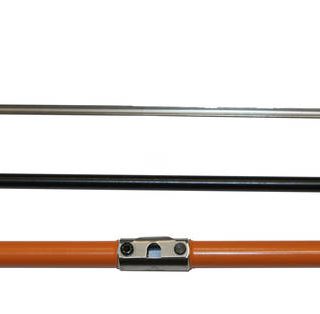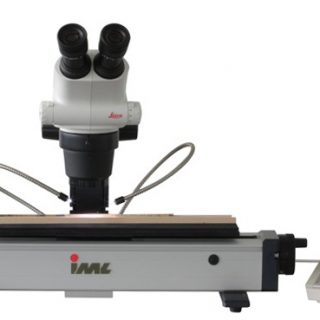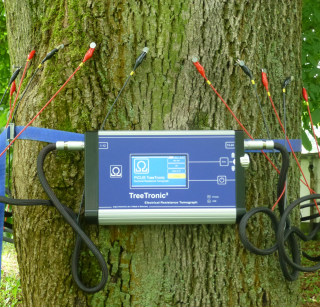The Tree Motion Sensors (TMS) are used to measure the real dynamic sway motion of trees in natural winds. The TMS are tilt-meters that are attached to the base of the tree – similar to the static load test – in order to measure the tilt of the root plate. The TMS tilt data shows the actual reaction of the tree in natural winds including all surrounding effects caused by other trees nearby or infrastructure.
The Tree Motion Sensors (TMS) are used to test the root anchorage of trees without the need to apply an external artificial deflection load. When wind blows trees start to sway and this load is transferred to the root plate. The TMS records the dynamic sway motion of trees in natural winds so what differences are there to the already established static tree pulling test technique?
The static pulling test, based on the findings of Wessolly (Wessolly & Erb, 1998), measures the root safety of trees. During the static pulling test the tree is exposed to a load which is usually created by a winch and a rope attached to the tree. The reaction of the tree – which is root plate tilt and compression of marginal wood fibres – to this load is measured. The artificial load is compared with a theoretical estimate of the load a typical wind would have caused to the tree. There is advanced software available to estimate the wind load on the tree (Arbostat & Detter). However, static pulling of trees can be difficult to implement & carry out, particularly in urban areas.
The TMS records the dynamic sway – or tilt – motion of trees in natural winds which is more realistic. However the wind blows and however the tree is sheltered by other trees / buildings, the sway motion recorded shows the real response of each tree to the natural conditions.
Using TMS technology the anchorage safety of trees in large numbers can be tested with little effort.
When to use the TMS system
Confirmation of stability of trees.
Trees that show little to no root plate tilt in winds can be consider to be safe.
Identification of trees with root anchorage problems.
The most typical application is to equip several trees in the same area with TMS sensors. Comparison of the tilts recorded identifies trees with tilts larger than others.
Combination with static TreeQinetic pull tests.
Once a tree with large tilt movement in natural wind has been identified, it can be useful to perform a static pull test to measure the reaction to a known force.
Supervision of trees near construction works.
Large changes of tilt of trees near construction work (piling work etc) can be monitored using the TMS sensors.
Long term monitoring of a tree.
Trees which are suspected to have root problems may be monitored on a regular basis to see if:
- the wind response gets better ( ie. new roots grow)
- gets worse (ie roots deteriorate or have been cut)
- there is no measurable change
One or two monitoring periods of sufficient winds per year should be sufficient to do this type of test
TMS Data can by processed using a pre-pay service at www.treesensor.com. The Treesensor Webservice searches for tilt maxima and creates a pdf showing all data recorded.

